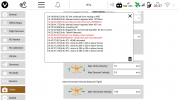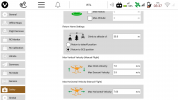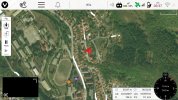I am waiting for someone(s) smarter than I to address my original question - why is it in a low battery situation when RTH is automatically activated the 520 immediately ascends to the programmed RTH altitude? Yes, I know, because that is what it is told to do. But why is it directed to ascend. Makes no sense when you are being warned that you are about to exhaust the power supply to the 520 and when you do, the 520 is going to come crashing down. The only questions are from how high and how big a mess are you going to make when the 520 is introduced, abruptly, to terra firma.
I fly a Mavic Enterprise Dual for my state Urban Search and Rescue Task Force. This model has 3 types RTH: Smart RTH, low battery RTH, and Failsafe RTH. From the User Manual:
Smart RTH - If the GPS signal is sufficiently strong, Smart RTH can be used to bring the aircraft back to the Home Point by pressing and holding the RTH button on the controller.
Low battery RTH - This mode is triggered when the Intelligent Flight Battery is depleted to the point that the safe return of the aircraft may be affected. Return home or land the aircraft immediately when prompted. DJI Pilot (the flight app) displays a warning when teh battery is low. The aircraft will automatically return to the Home Point if no action is taken after a ten-second countdown. The user can cancel RTH by pressing the RTH button or Flight Pause button on the remote controller.
If RTH is cancelled following a low battery level warning, the Intelligent Flight Battery may not have enough charge for the aircraft to land safely, which may lead to the aircraft crashing or being lost. The thresholds for the battery level warnings are automatically determined based upon the aircraft's current altitude and distance from the Home Point.
The aircraft will land automatically if the current battery level can only support the aircraft long enough to descend from its current altitude. The user cannot cancel the auto landing but can use the remote controller to a lter the aircraft's orientation during the landing process.
Failsafe RTH - to summarize this one - this is activated if the remote signal is lost for more than 2 seconds. The Forward Vision System of the Mavic allows the aircraft to create a real time map of the flight route as it flies if the Home POint was successfully recorded and the compass is functioning normally.When this mode is activated the aircraft will begin to reverse its flight path along the original route. If the signal is not reestablished within 60 seconds, the aircraft will RTH from that point in a straight line.
The RTH procedure is as follows:
1. The aircraft adjusts its orientation.
2. If the aircraft is more than 20 meters from the Home Point when RTH is activated the aircraft will ascend to its predetermined altitude. It will fly to the Home Point at 12 m/ssec. If the aircraft is higher than the preselected altitude at the time RTH is activated, the aircraft will return at the higher altitude.
If the aircraft is between 5-20 meters from the Home Point the aircraft will fly to the Home Point at its current altitude unless st he current altitude is less than 2 meters, in which case the aircraft will ascend to 2 meters and fly to the Home Point at 3 m/sec, if the Current Altitude option has been selected. If the Current altitude option was not selected, the aircraft will land immediately.
If the aircraft is less than 5 meters from the Home Point when the RTH command is initiated, the aircraft will and immediately.
3. One the aircraft has landed the motors will automatically shut down.
As I mentioned previously, when I flew a Typhoon H I, on more than 1 occasion, purposely exhausted the battery at about 1-2 feet off the ground. The H took control of itself, landed and shut down. This is what I expected the 520 to do as it makes sense. I think the Mavic protocol is far superior.





